
SS Keewatin: Requiem for a CP Steamship
Written by John Thompson, Canadian Contributing Editor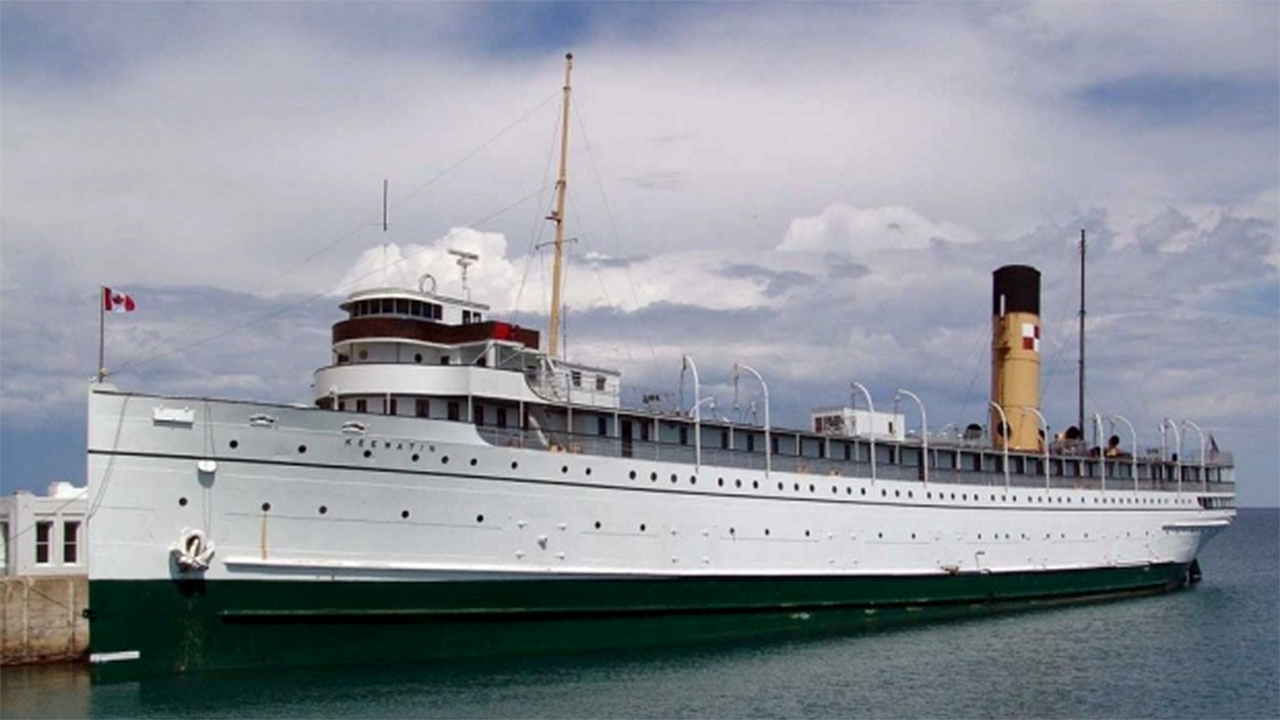
A survivor of Canadian Pacific’s once vast marine operations has received a new home in Kingston, Ontario. The ship is the SS Keewatin, built in 1907, making it one of the oldest surviving passenger steamships in the world. The Keewatin served from 1907 until 1965 on Canadian Pacific Steamships’ Great Lakes service, between Port McNicoll and Port Arthur-Fort William (now Thunder Bay), Ontario.
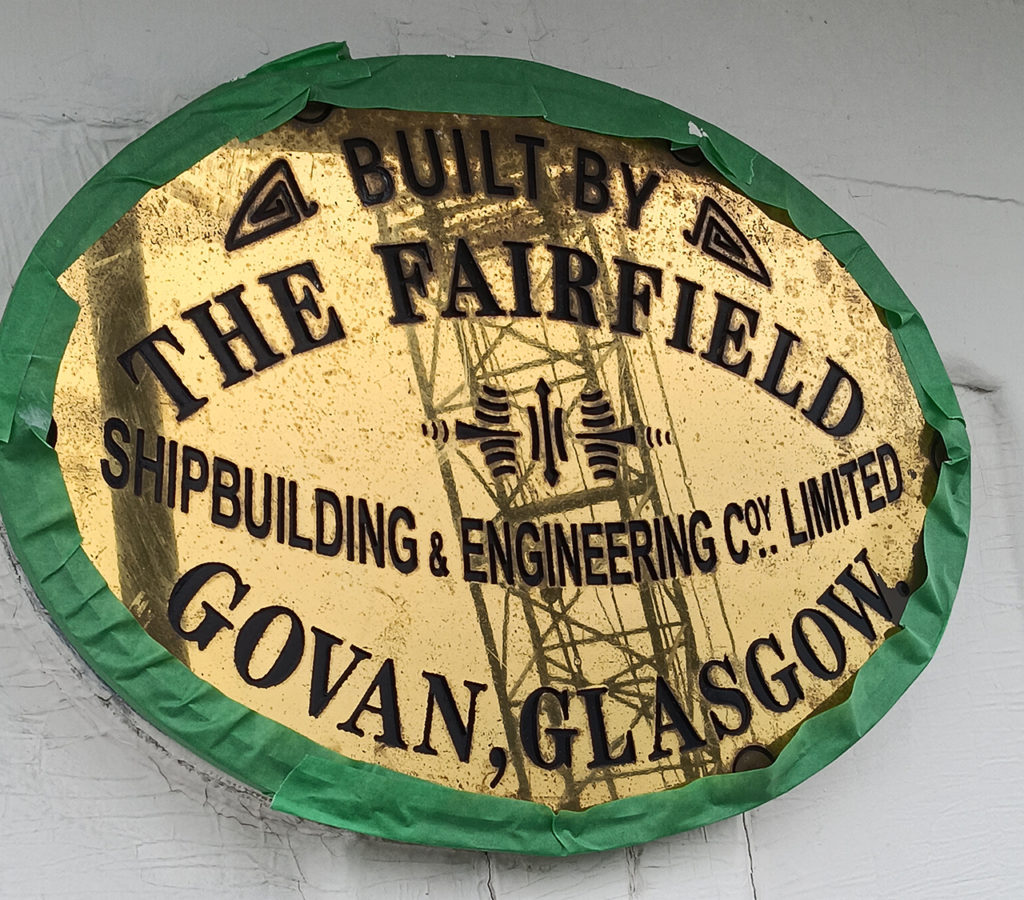
The Keewatin’s life began in Govan, Scotland, on the River Clyde, at the yard of the Fairfield Shipbuilding and Engineering company. She had a sister ship, the Assiniboia, that, unfortunately, did not survive.
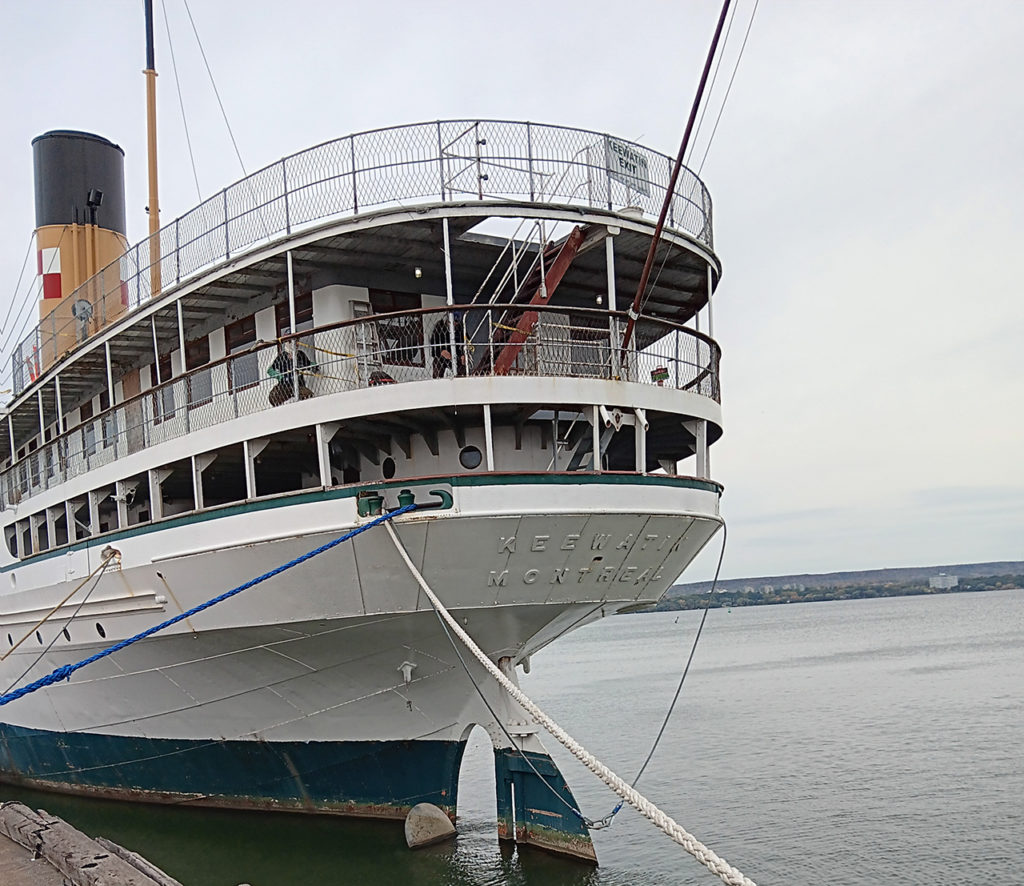
In 1907 the Keewatin steamed across the Atlantic, to her initial home port of Owen Sound, Ontario, on a CP branch line. In service, the ship carried freight, including western grain, on the 2½ day, 542-mile run. Five years later CP transferred its Great Lakes operations to the newly constructed site of Port McNicoll, which grew into a small town.

The ship is 336 feet long, with a 43-foot beam. Four coal fired Scotch boilers provided steam to a quadruple expansion reciprocating engine that powered a single propellor. Accommodation was provided in 108 staterooms with berths for 288 passengers, served by a crew of 86. The service, supplemented by three older vessels for many years, was popular with travelers who used the ships to and from the Lakehead, served by CP’s passenger trains. Special boat trains were run from Toronto to make connections.
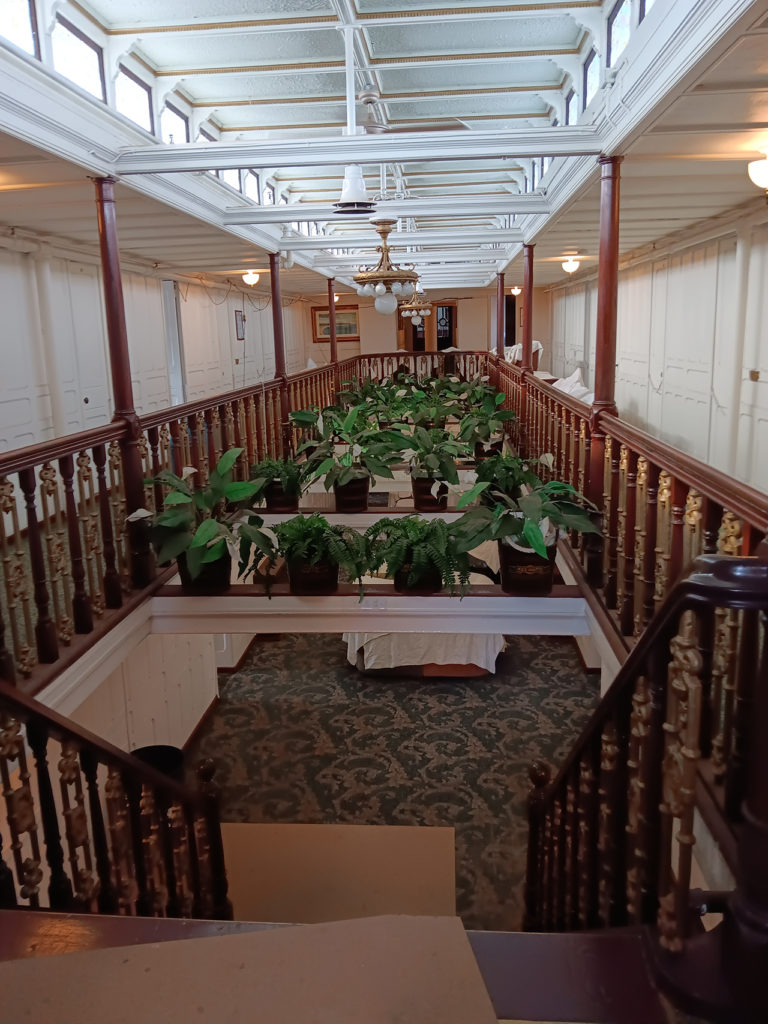
In the post-World War II era the Assiniboia was converted to oil firing; however, the Keewatin remained a coal burner to the end. After about 1950 they were the only ships left on the run. By the mid-1960s CP had decided to end the Great Lakes service, due to stiff competition from roads and airplanes, rising costs, and the vessels’ age, as they neared their 60th birthdays. In addition, one of the connecting trains, the Dominion, was up for discontinuance.
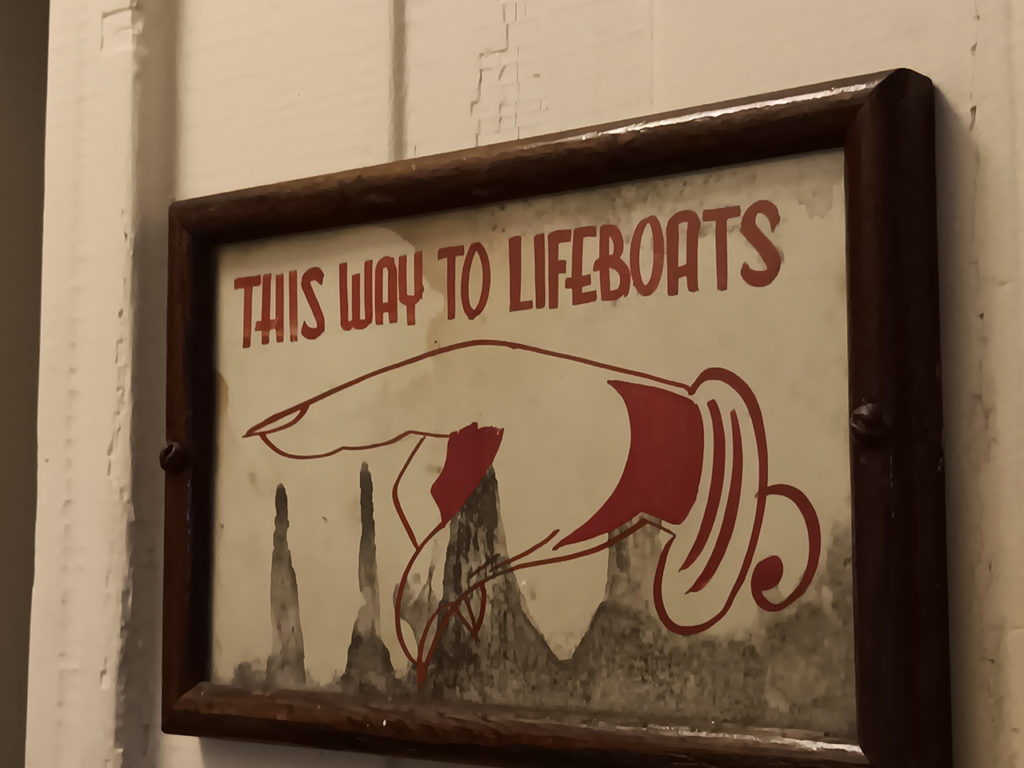
Fortunately, a scrapyard was not in the Keewatin’s future. In January 1967, the ship was bought for $37,000 ($2,000 over the scrap price) by a Western Michigan businessman, Ronald Petersen, to become a museum at Saugatuck (Douglas) Mich., at the south end of Lake Michigan. This operation lasted until circa 2011, when the Peterson family decided to sell the Keewatin. The ship was subsequently bought by Toronto’s Skyline Marine, which wanted the ship as a centerpiece for its proposed residential development at Port McNicoll.
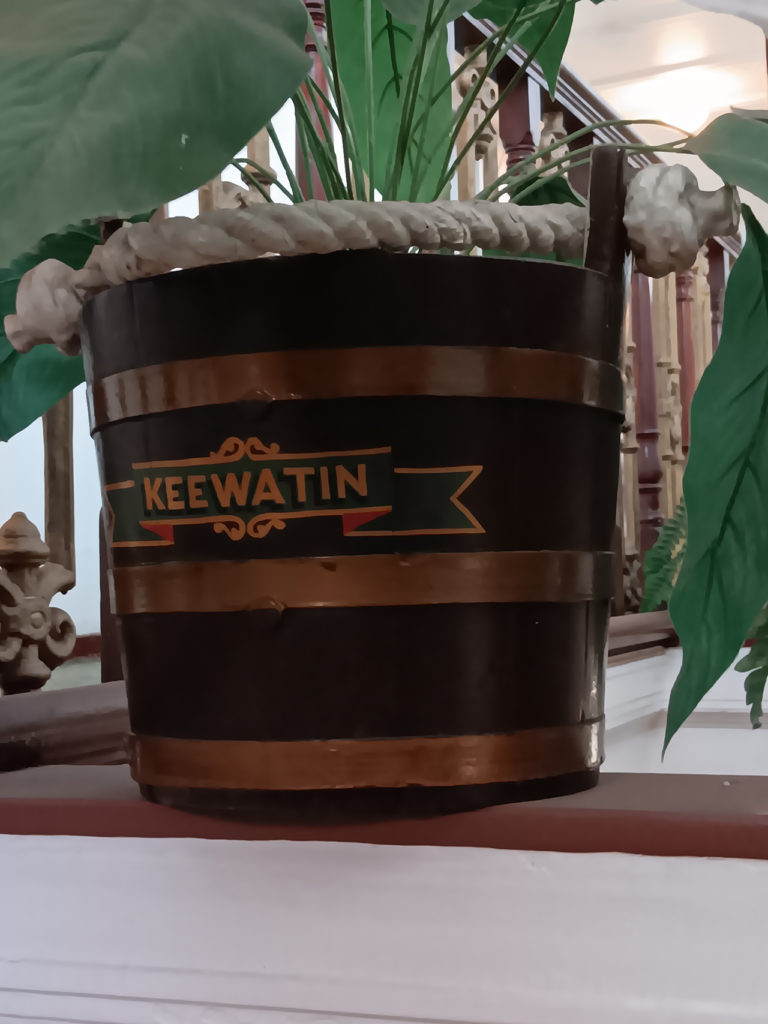
Under tow, the Keewatin repeated its journey back to Port McNicoll, proudly displaying the Canadian flag. There, on a bright, sunny June 2012 day, the former “Queen of the Lakes” was greeted by a crowd of thousands. The ship was moored at its former dock, and soon opened for public tours. Over the next few years, a small group of dedicated volunteers conducted tours, publicized the ship, and performed maintenance. However, it ultimately became apparent that the old ship required extensive superstructure work, beyond their resources. Sad to say, neither the Provincial or Federal governments offered financing. In addition, the Skyline development never materialized in its planned form, and the company evidently lost interest in the Keewatin. Given the untenable situation at Port McNicoll, Skyline offered the ship to the nearby towns of Midland and Collingwood, which have extensive maritime histories. However, they declined, not wanting to take on the financial responsibility.
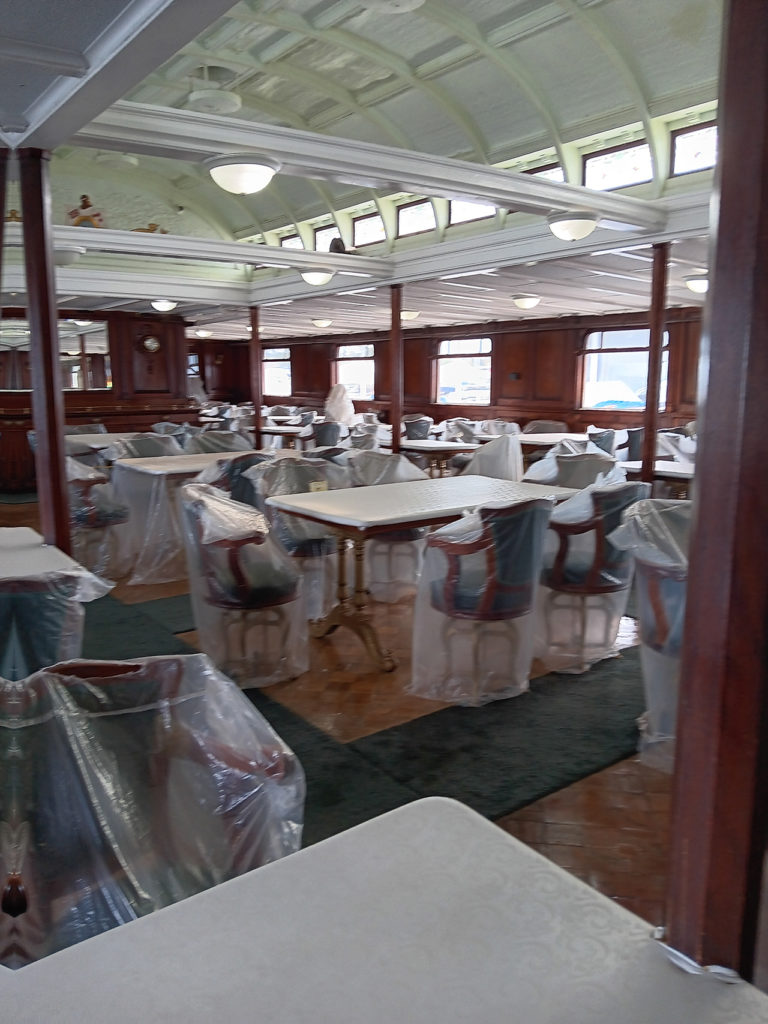
Fortunately, salvation arrived from the Marine Museum of the Great Lakes, Kingston, Ontario (at the eastern end of Lake Ontario). The Keewatin would become the prime exhibit there, which has the financial resources to properly maintain it.
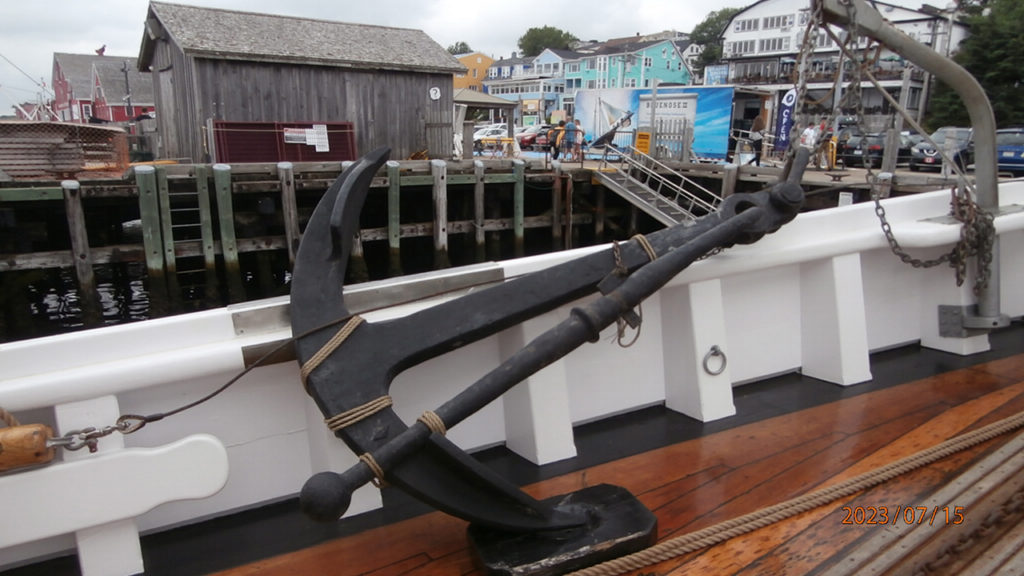
The Keewatin’s steel hull is still in excellent condition. However, the wooden superstructure needed extensive repairs to seal leaks, repair deteriorated wood, and perform some metal work. Accordingly, the museum awarded a contract to the Heddle Shipyard at Hamilton, Ontario, a large, well-equipped company. Hamilton is at the approximate western end of Lake Ontario.
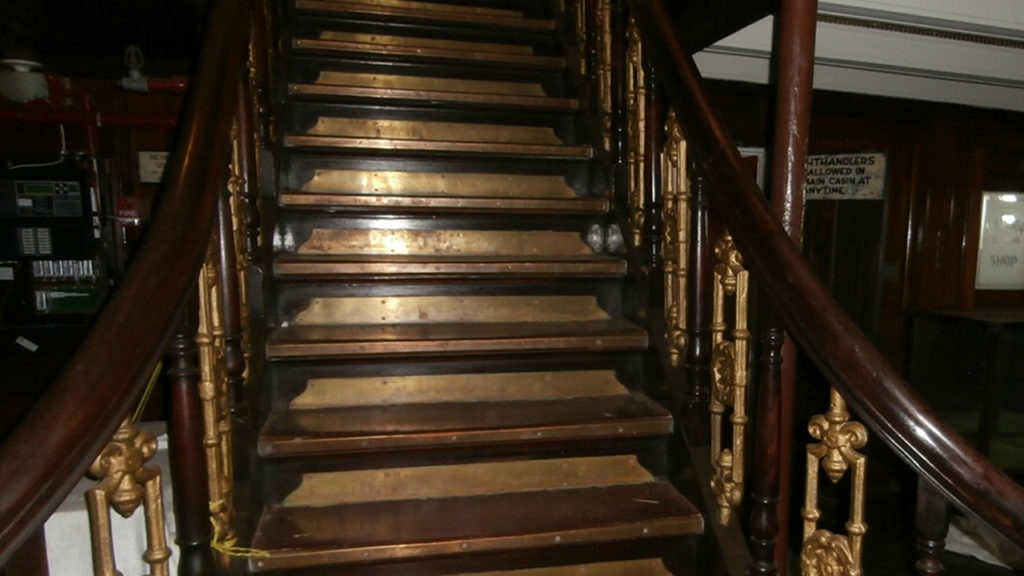
The Keewatin left Port McNicoll for the last time on April 24, 2023, arriving in Hamilton on April 29. The journey took it through Georgian Bay, Lake Huron and Lake Erie, the Welland Canal, and part of Lake Ontario. At the Heddle Shipyard, the Keewatin was moored at the company’s dock, and work soon commenced. The superstructure was repaired and waterproofed, and deteriorated wooden planking was lifted from the steel deck.
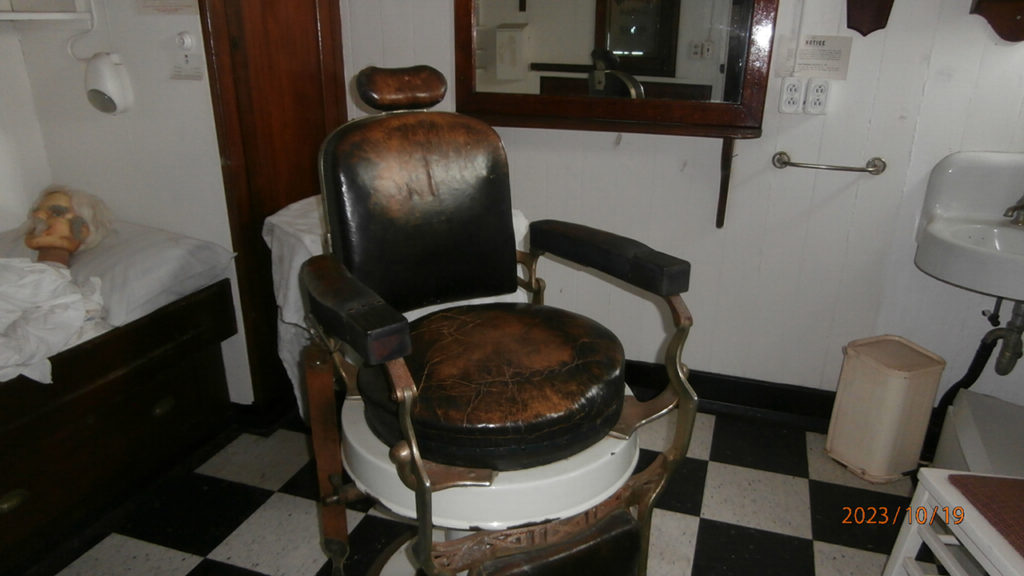

“It was an interesting challenge, a once-in-a-lifetime experience for us,” said Heddle’s Ted Kirkpatrick, Director of Business Development and Government Relations. “For example, we discovered things that we didn’t expect, but of course we were able to fix them.” He explained that, apart from making sure that the roofs and ceiling were watertight, interior work was not part of the contract; this will be performed at the museum.
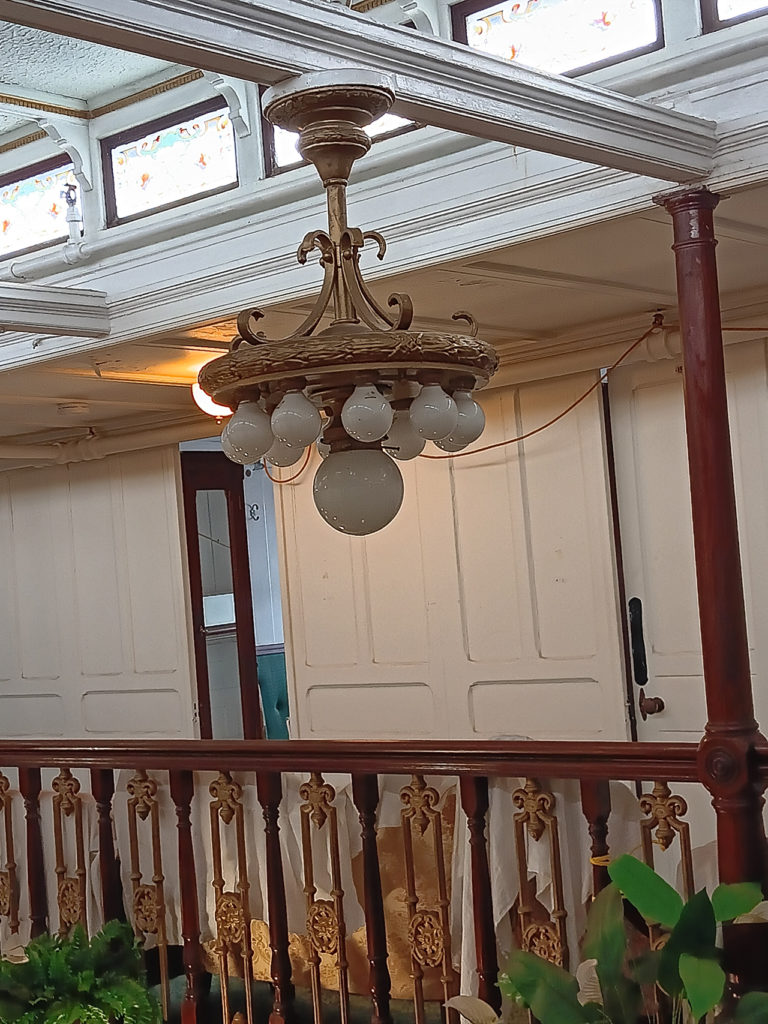
The Keewatin departed Hamilton on Sept. 23 for Kingston, with a “sail past” at Toronto for the public’s benefit. Canadian Pacific’s oldest steamship would then continue, under tow, to its new home.
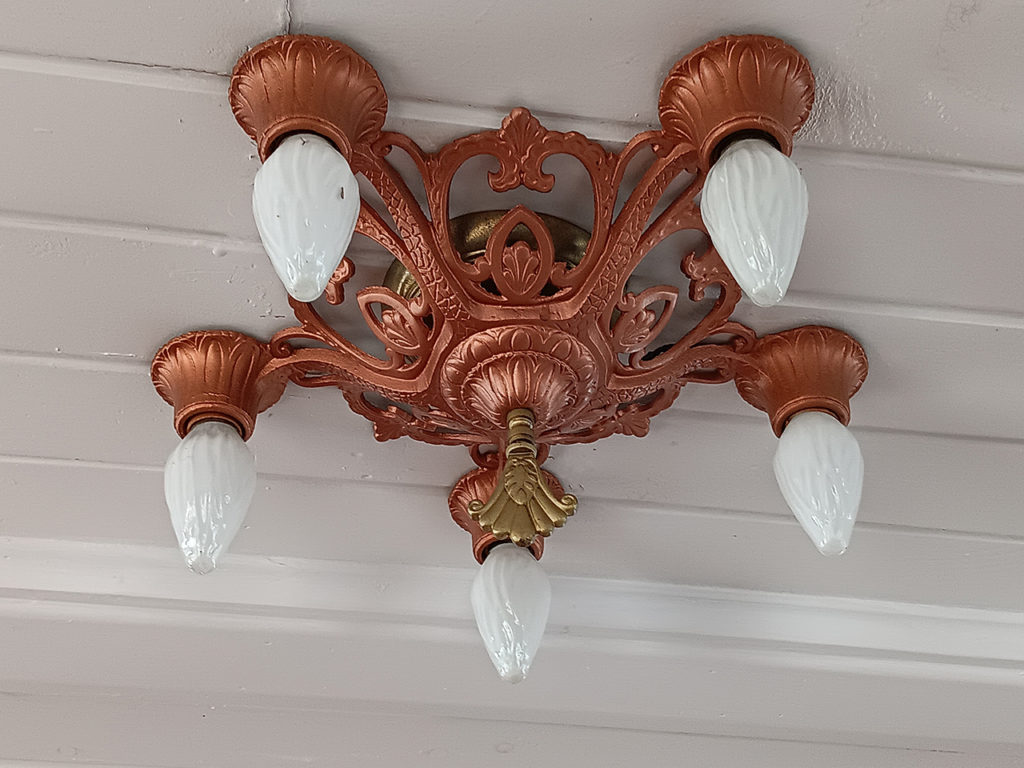
The beautiful ship avoided the scrapper’s torch more than once, saved by several fortunate quirks of fate. This makes the Keewatin, in naval terms, “a lucky ship.”
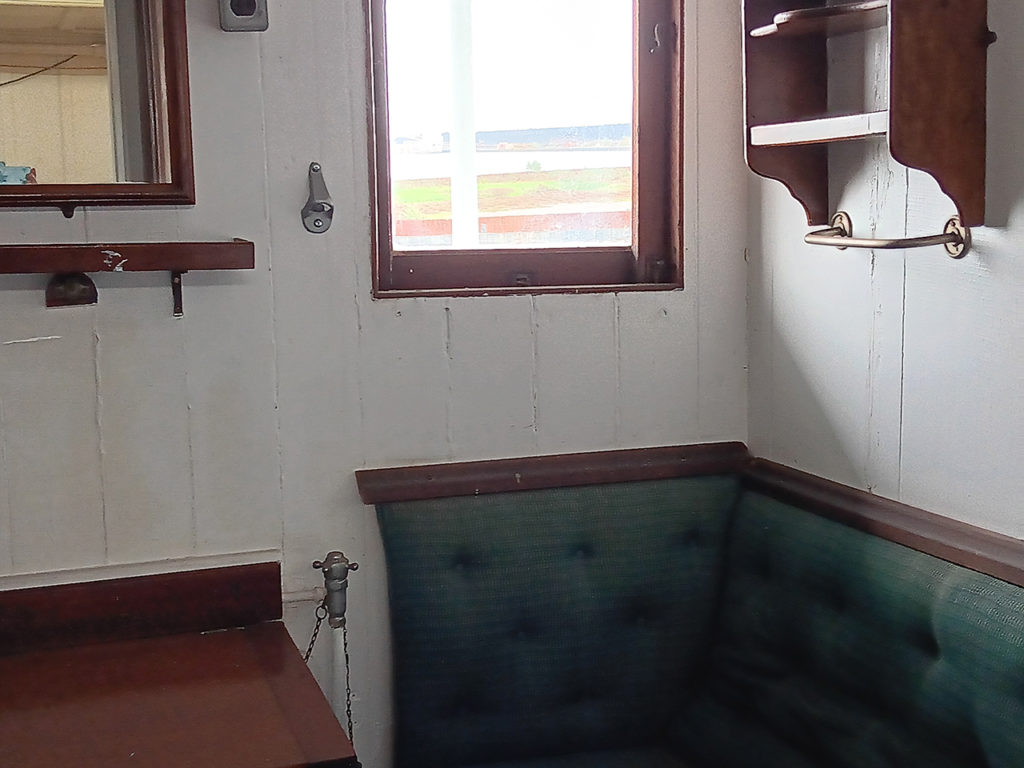
By 2024 the public should again be able to visit the Keewatin at Kingston. This city is on CN’s Toronto-Montreal line and is served by VIA Rail trains.
The writer expresses his appreciation to Heddle Shipyard’s Ted Kirkpatrick for his hospitality, which included a tour of the Keewatin.
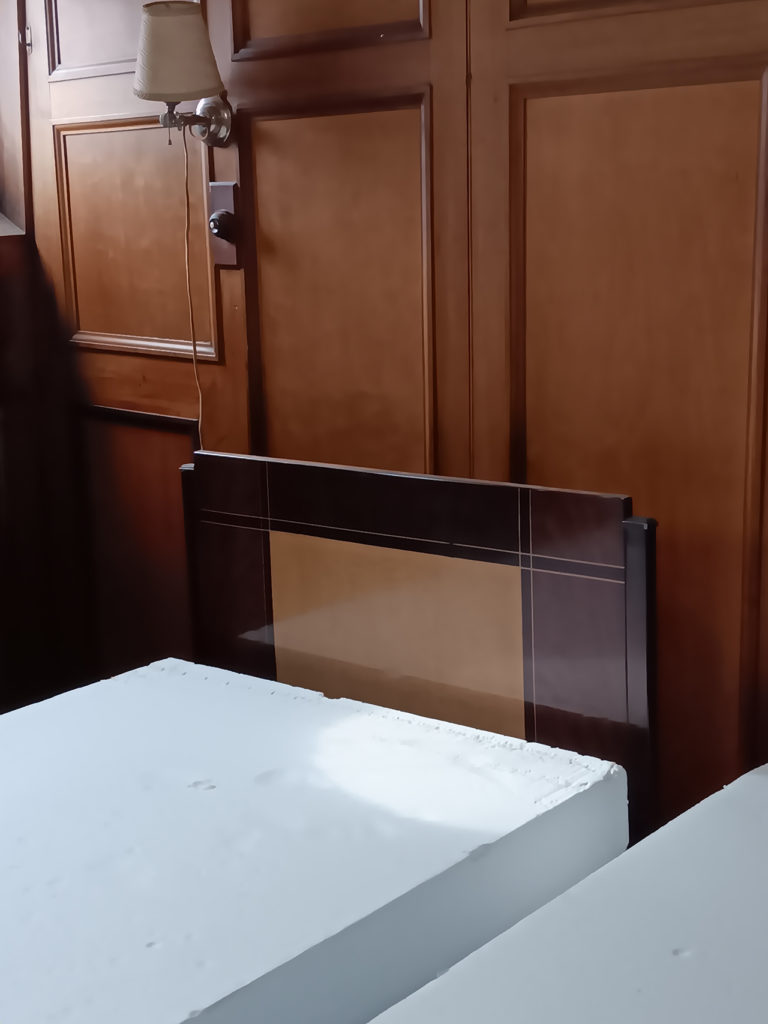



![“This record growth [in fiscal year 2024’s third quarter] is a direct result of our innovative logistic solutions during supply chain disruptions as shippers focus on diversifying their trade lanes,” Port NOLA President and CEO and New Orleans Public Belt (NOPB) CEO Brandy D. Christian said during a May 2 announcement (Port NOLA Photograph)](https://www.railwayage.com/wp-content/uploads/2024/05/portnola-315x168.png)